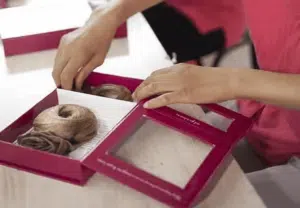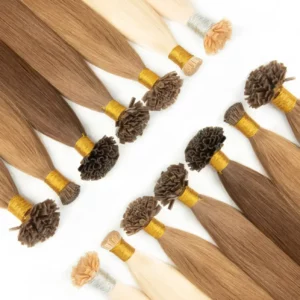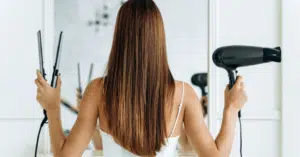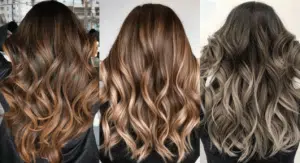Hair extensions are evolving quickly, and new methods appear every year. Among them, tape weft extensions have become one of the most popular and efficient choices in recent years. Stylists value them for speed, comfort, and the full-bodied look they deliver.
Tape weft hair extensions are a hybrid method that combines the easy adhesive application of tape-ins with the fuller, more voluminous results of traditional wefts. They offer quick installation, natural blending, and reusability. Still, they require regular maintenance and proper aftercare to last.
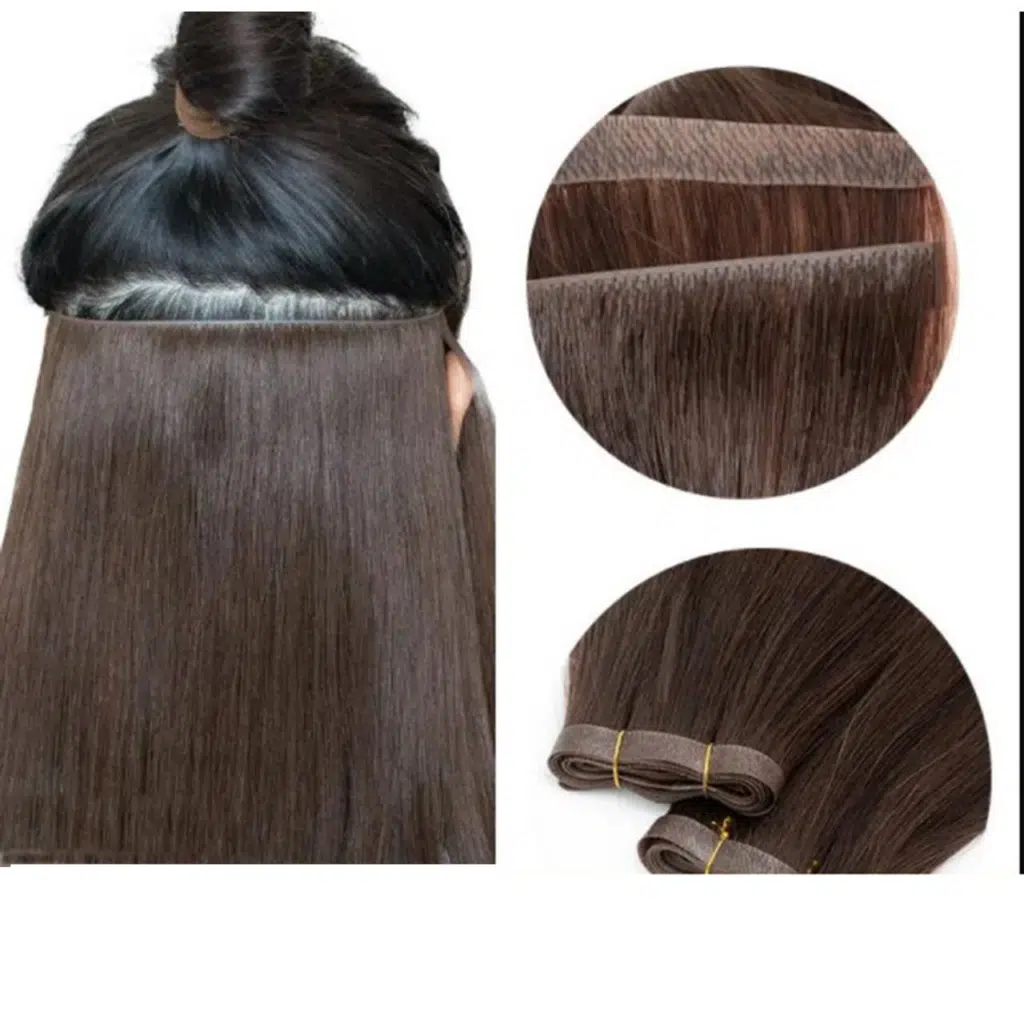
This method has rapidly gained popularity worldwide. Let’s look deeper at what tape wefts are, their types, pros and cons, installation steps, differences from tape-ins, and how long they last.
What are Tape Weft Hair Extensions?
Many stylists and clients confuse tape wefts with standard tape-ins. Understanding their definition is key before making a recommendation.
Tape wefts are a modern hybrid extension system. They combine the quick adhesive bond of tape-ins with the seamless, full coverage of a weft. Each piece comes as a wider strip of hair, allowing stylists to install more volume in less time. They sit flat against the scalp, remain lightweight, and deliver a luxurious finish in under 20 minutes.
Dive Deeper: Key Features
- Hybrid Structure: Offers the adhesive bonding of tape-ins and the dense coverage of wefts.
- Natural Appearance: Lays flat and blends seamlessly with natural hair.
- Time Efficiency: Large strips allow faster installation compared to multiple small tapes.
- Reusable: Can be removed, retaped, and reinstalled multiple times.
| Feature | Benefit |
|---|---|
| Wider Strips | Faster application |
| Flat Adhesive Bond | Invisible finish |
| Weft-Like Density | Fuller appearance |
| Reusable Design | Cost-effective |
Tape wefts have quickly moved from a niche method to one of the most in-demand services in professional salons.
What are the types of Tape Weft Hair Extensions?
Not all tape wefts look or behave the same. Manufacturers and stylists now use several variations to meet different client needs.
The two main categories are regular tape wefts and invisible tape wefts. Invisible tape wefts use injection technology to hide the base completely, making them ideal for fine or thin hair.
Dive Deeper: Options Available
Regular Tape Weft:
Classic adhesive weft with visible PU strips. Offers strong hold and volume, suited for medium to thick hair.

Invisible Tape Weft (Injection Technology):
Hair is injected into the PU base so it appears to grow naturally from the scalp. Perfect for clients with finer hair who want maximum invisibility.

Single-Sided Tape Applications:
For extra-light installs, one side can be replaced with single-sided tape, reducing weight while still maintaining secure hold.
| Type | Look | Best For |
|---|---|---|
| Regular Tape Weft | Slightly visible | Medium to thick hair |
| Invisible Tape Weft | Seamless, scalp-like | Fine hair |
| Single-Sided Application | Lightweight | Fragile or thinning hair |
The choice depends on client expectations for blending, lifestyle, and the natural density of their hair.
Tape Weft Hair Extensions Pros and Cons?
Every method has its benefits and challenges. Tape wefts are no exception. Stylists must explain both sides clearly to clients.
Tape wefts are lightweight, reusable, and fast to apply. But they require routine upkeep, can slip with oil exposure, and may not last as long as permanent methods like keratin tips.
Dive Deeper: Advantages and Drawbacks
Pros:
- Quick installation (often under 30 minutes).
- Full, voluminous effect with fewer pieces.
- Comfortable and nearly invisible at the root.
- Safe for most hair types, including fine hair.
- Reusable multiple times with proper retaping.
Cons:
- Requires removal and reinstallation every 6–8 weeks.
- Adhesive may loosen with oils or sweat.
- Not ideal for highly active or frequent swimmers.
- Must avoid heavy conditioners at roots.
| Pros | Cons |
|---|---|
| Fast and efficient application | Shorter wear cycle |
| Natural look and lightweight feel | Adhesive weakens with oils |
| Cost-effective (reusable) | Not ideal for heavy exercise |
| Adds significant volume quickly | Requires skilled installation |
For salons, the pros often outweigh the cons, but proper consultation ensures clients know what to expect.
How to install Tape Weft Hair Extensions?
Proper installation makes the difference between secure, natural results and extensions that slip or tangle.
To install tape wefts, stylists prepare clean sections, apply adhesive strips close to the scalp, and sandwich natural hair between two wefts.
Dive Deeper: Installation Guide
Step 1 – Preparation:
- Wash with clarifying shampoo to remove oils.
- Dry thoroughly and brush out tangles.
- Create neat horizontal sections.
Step 2 – Placement:
- Peel off the adhesive backing.
- Place a thin slice of client’s hair under the first strip.
- Secure with a second strip above, sandwiching natural hair.
- Press firmly for full adhesion.
Step 3 – Blending:
- Apply across the row until the head is covered.
- Style with gentle heat to seal adhesive.
Step 4 – Aftercare Instructions:
- Avoid washing for 48 hours.
- Use sulfate-free shampoo and lightweight conditioner.
- Brush daily with extension-safe tools.
Professional application ensures durability, while incorrect placement may cause slipping or visible bonds.
How long do tape weft extensions last?
Lifespan is always a top concern for salons and clients. Tape wefts offer good durability when properly cared for.
Tape weft extensions last 6–8 weeks before requiring retaping. With quality hair, the same extensions can be reused for 6–9 months, sometimes up to a year.

Dive Deeper: Longevity Factors
- Hair Quality: Full cuticle extensions can last up to 18 months. Non-Remy lasts much shorter.
- Aftercare Routine: Avoiding oils, using extension-safe products, and gentle handling extend lifespan.
- Client Lifestyle: Swimmers, athletes, or frequent heat users may need more frequent reinstallations.
- Stylist Skill: Correct sectioning and tension prevent premature slipping.
| Factor | Effect on Lifespan |
|---|---|
| Hair Quality | Determines reuse potential |
| Lifestyle | Active clients may shorten wear |
| Aftercare | Proper routine keeps bonds secure |
| Maintenance | Retaping every 6–8 weeks |
Stylists should pre-book move-up appointments for clients to maintain flawless results.
What’s the difference between Tape-In and Tape Weft Hair Extensions?
Stylists sometimes confuse tape-ins with tape wefts, but they are not the same method. Both use adhesive technology, but their design and results differ.
Tape-ins use small individual pieces applied strand by strand, while tape wefts use wider strips that provide more volume per piece and faster installation.
Dive Deeper: Key Comparisons
Tape-In Extensions:
- Applied in smaller sections.
- Takes longer to install a full head.
- Offers natural results but less volume per piece.
- Better for partial installs or highlights.
Tape Weft Extensions:
- Wider strips cover larger areas quickly.
- Faster installation, usually under 30 minutes.
- Creates a fuller, thicker look in less time.
- Ideal for clients wanting both length and density.
| Feature | Tape-Ins | Tape Wefts |
|---|---|---|
| Size | Small strips | Wider weft-like strips |
| Install Time | 1–2 hours | 20–30 minutes |
| Volume | Moderate | High |
| Best For | Highlights, small fills | Full transformations |
Tape wefts are perfect for busy salons that need efficiency without sacrificing quality, while tape-ins remain useful for detail work and smaller adjustments.

My Opinion
From a manufacturer’s perspective, tape wefts are one of the most exciting innovations in recent years. They provide salons with the ability to deliver fast, full-volume transformations that clients love. Still, stylists must educate clients about their maintenance needs and set expectations clearly. For efficiency, reusability, and natural appearance, tape wefts are a smart investment.
FAQ
Are tape wefts and tape-ins the same?
No. Tape wefts are wider and deliver more volume per piece.
Do tape wefts damage natural hair?
Not when applied correctly. They use gentle adhesive and create minimal tension.
Can tape wefts be reused?
Yes. With proper removal and new tape, they can be reapplied several times.
How many packs do I need for a full head?
Typically 4–6 packs, depending on client density.
Can clients wash hair with tape wefts?
Yes, but they must avoid oil-based shampoos or conditioners on the bonds.
Which lasts longer: tape wefts or keratin tips?
Keratin tips last longer per install, but tape wefts are faster and reusable.
Are invisible tape wefts better than regular?
They offer a scalp-like finish, perfect for fine hair, but cost more.
Can tape wefts be styled with heat tools?
Yes, as long as heat is not applied directly to the adhesive strip.
What is the main advantage of tape wefts?
They combine fast installation with a fuller, natural look.
What is the main drawback of tape wefts?
They require reinstallation every 6–8 weeks.
Conclusion
Tape weft extensions are a fast, modern, and highly effective way to achieve volume and length. They combine the best of tape-in and weft systems but require regular maintenance for lasting results.
Hibiscus Hair Manufacturer has been dedicated to producing high-quality hair extensions for 25 years and is a recognized leader in the industry. If you are interested in finding a reliable hair extensions supplier and wholesale for your brand, please visit our website for more information:
HOME

